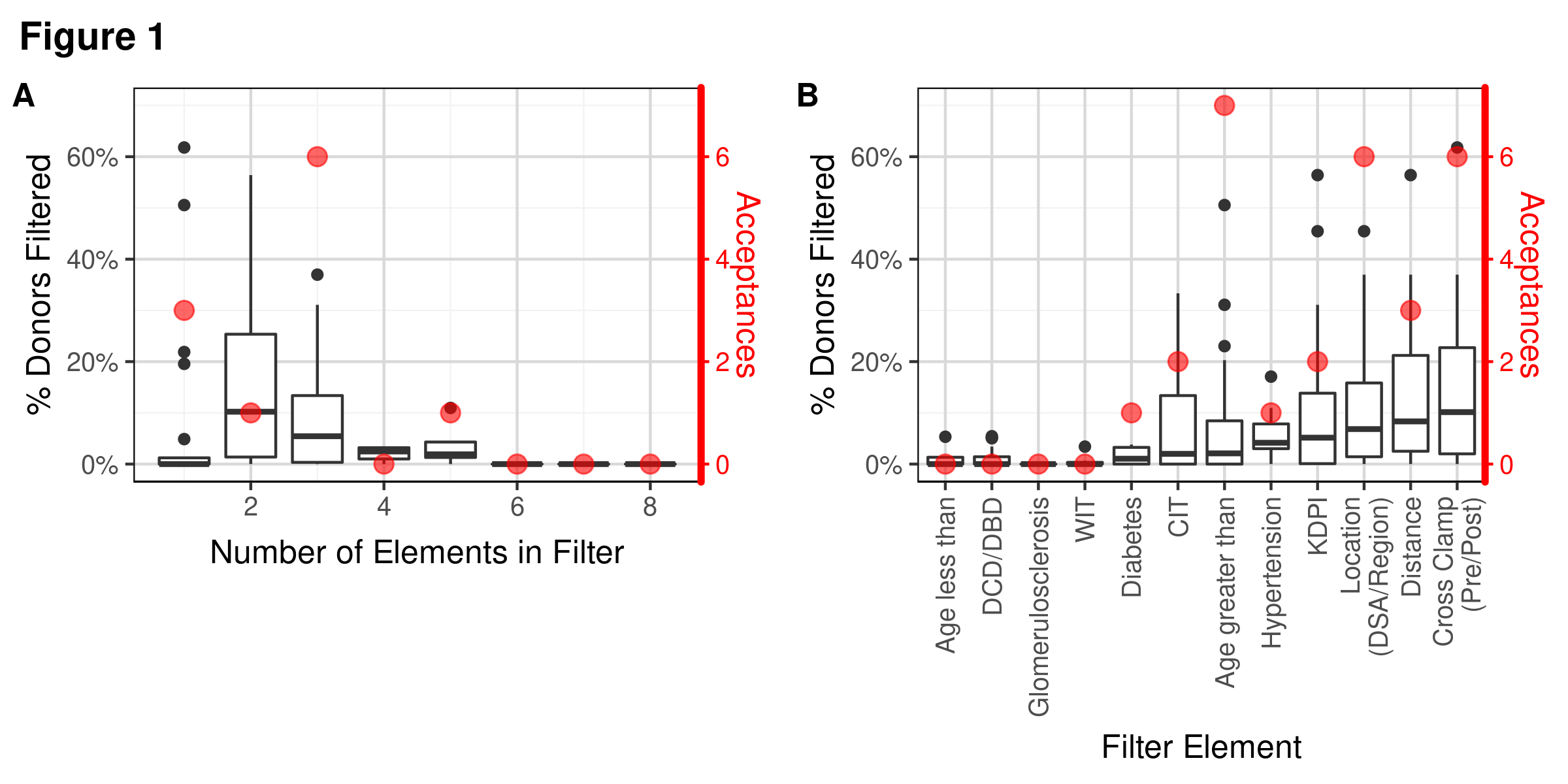Getting to Yes Faster: Multifactorial Filters to Reduce Unwanted Offers
United Network for Organ Sharing, Richmond, VA
Meeting: 2020 American Transplant Congress
Abstract number: 122
Keywords: Allocation, Cadaveric organs, Resource utilization, Screening
Session Information
Session Name: Kidney Deceased Donor Selection I
Session Type: Oral Abstract Session
Date: Saturday, May 30, 2020
Session Time: 3:15pm-4:45pm
 Presentation Time: 4:15pm-4:27pm
Presentation Time: 4:15pm-4:27pm
Location: Virtual
*Purpose: Evaluate if multifactorial filters can reduce unwanted kidney offers to centers, thereby reducing administrative burden and getting to the accepting candidate quicker.
*Methods: Using recursive partitioning trees we modeled centers’ 2017-2018 acceptance practices and derived potential filters defined as types of offers from at least 20 donors with 0 acceptances. Filters were comprised of donor (e.g., age, KDPI) and logistic (e.g., location, post-recovery) elements. For the pilot (6/17/2019 – 10/1/2019) centers selected from the set of model-derived filters (MDF) and their own custom filters (CF), but received all offers they selected filters for. We measured the impact (number of offers and donors filtered) and allocation risk (accepted offers that would have been filtered) had the filters been in effect.
*Results: 29 kidney centers participated in the pilot and received 20,774 offers from 3,557 donors and accepted 700 offers. Using the selected filters, 1,950 (9%) offers and 776 (22%) donors would have been filtered; the centers accepted 11 of these offers. If the centers had used the full set of MDF, the potential impact (avoided unwanted offers) would have been greater, but at a higher allocation risk. MDF captured 2,868 (14%) offers, 1,007 donors (28%), but 20 acceptances. Individual center-level impacts ranged from filtering 0% to 75% of donors. The median percent of donors filtered was 3% for centers that selected only CF, 29% for those that selected only MDF, and 20% for centers that selected a mixture. All centers using at least one MDF filtered donors during the pilot, while half of centers using only CF filtered donors.
Filters were most effective when only 2 elements were included (Fig 1A), suggesting they are better at describing center acceptance practice than filters with more elements. Increasing to 3 elements filtered fewer donors and added acceptances. Beyond 3 elements very few donors were filtered. We saw a range of impacts when looking at the individual filter elements. Filter elements that were more effective at removing donors also came with greater allocation risk (Fig 1B).
*Conclusions: Moving forward we will attempt to mediate the allocation risk by making adjustments to modeling and improving on-line reporting. Adding candidate elements will help ensure highly sensitized and other patients with selected circumstances (e.g., zero mismatch) do not miss out on offers. However, we are limited to use of historical offer data and unable to account for changes in center practice. The success of multifactorial offer filters depends on the collaborative relationship between the OPTN, transplant centers, and OPOs.
To cite this abstract in AMA style:
Toll A, McGehee H, Rosendale J, Stewart D, McTier R. Getting to Yes Faster: Multifactorial Filters to Reduce Unwanted Offers [abstract]. Am J Transplant. 2020; 20 (suppl 3). https://atcmeetingabstracts.com/abstract/getting-to-yes-faster-multifactorial-filters-to-reduce-unwanted-offers/. Accessed December 29, 2025.« Back to 2020 American Transplant Congress

